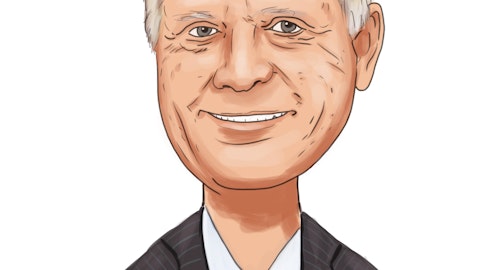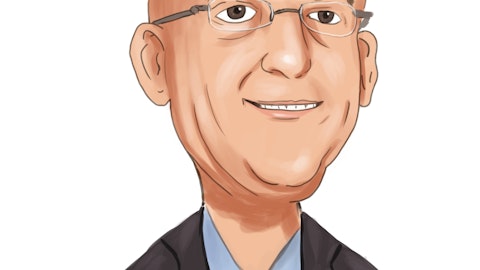Luca Issi: The progress have 3 quick one. Maybe the first on TTR cardiopathy. Wondering if you can comment on your reaction yesterday from the news that Anal will have an advisory community meeting, and how you’re thinking about implications for your program? The second one is AGT. What’s the latest on that molecule? Are you still planning to invest in both the first gen and the second gen or at some point, you’re going to pivot to the second gen? And maybe more broadly, what’s the latest on BD for AGT. And maybe last one on HAE. I think at American College last year, 3 of the 8 patients that were dosed every 8 weeks — sorry, every 2 months, QAW switch back to monthly. However, I think in the abstract at Quad AI, it’s 2 out of 8 that actually switched back to monthly. So from 3 to 8 to 2% to 8%. So wondering what happened there.
Brett Monia: Sure, Luca. So I prefer not to comment very significantly on competitor products and outcomes by the FDA. What I could say is that in hindsight, not try surprised, the results were a little complicated. 6-minute walk test, the magnitude of benefit, the benefit in patients on tafamidis versus naive patients is pretty complicated. So not terribly surprised that the FDA is going to want to get input publicly — from experts in the field. We welcome it because it gives us more information. We have very strong relationships with all the key KOLs and investigators around the world. disease, but we’re always welcome to hear more. And I think it can help us set us up for a better, more successful cardiomyopathy outcomes trial.
Regarding ATT, we’re still planning to present data on the 2 molecules in the second half of this year. the hypertension study is wrapping up, and we’re planning to start a heart failure study for the second molecule, the Gen 2.5 molecule in the second half of this year. We won’t wait for that study. We’ll share the data from the 2 molecules in hypertension of the first molecule in heart failure by the end of the year. And as far as business development activities, we’re kind of on pause because we want to generate all the data for those 3 studies before we start responding to inbounds, and there’s been certainly interest in the program. Regarding HAE, the correct number of patients that were attack-free in the bimonthly is correct in the Quad AI presentation, 6 of 8 patients.
The previous data that was presented last year was 58 patients. That was really just a timing effect when you make the cutoff. 1-year treatment, 6 of 8 patients were attack free in the bimonthly whereas the timing for that included the 5 patients that was presented last year was just beyond one year. So it’s just a technical thing. If anything, it favors the efficacy and bimonthly for donidalorsen. And with that said, it’s really a monthly dosing that we really are very excited about by month that gives you an option for dosing, but monthly dosing really is one of several key advantages for donidalorsen versus competition. The convenience of monthly self-administration, excellent tolerability, fast onset of action and the unprecedented efficacy with 95% mean reductions in HAE attacks for now for a year of treatment.
Operator: The next question comes from Gary Nachman with BMO Capital Markets.





